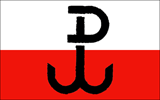Sraaks
The Sraaks are intelligent theropod dinosaurs closely related to the Allosaurus. They are nomadic hunters who follow migrating dinosaur herds across the savannas and jungles of Akhesa. Growing twenty feet long from head to tail and seven feet tall, they are the fastest and physically strongest and hardest to kill of the three sentient species. They have no use for crafted weapons like clubs, bows, or swords, as they are naturally equipped with sharp claws and teeth. They have no ranged weapons.
The Sraak gathered two resources: food and bone. Food is used for creating new Sraaks as well as funding technological research. Bone is used for constructing buildings. Both of these resources can be gathered from the carcasses of wild animals or from dead Kokongs, Humans, or even other Sraaks.
Because of Sraak nomadism, Sraak buildings are temporary and can therefore be taken down, with the bone used to construct them being returned to the resource stockpile. Unfortunately, they are less durable than buildings constructed by Humans or Kokongs.
Sraaks are capable of swimming across water, but they cannot attack while swimming and therefore do not have a true navy.
Sraak units are created one-by-one, and include:
Warrior: Resource-gatherer, builder, and basic military unit in one package.
Rammer: Carries a large log which he uses to ram into buildings and trees. This is the Sraak "siege weapon".
Shaman: The spiritual leaders of the Sraak, these can heal other Sraaks and "convert" certain predatory wild animals to the Sraak cause at the cost of energy.
Chieftain: The most powerful Sraak warrior, he can also temporarily raise his warriors' morale (therefore increasing their attack rate and speed). You can only have one Chieftain for every Camp Center you construct.
Sraak buildings are:
Camp Center: The Sraak equivalent of a Town Center, this creates Warriors, Chieftains, and Rammers, and also can act as a place to deposit resources. You can never build more than five of these.
House: Raises population limit.
Storage Hut: Deposit resources here.
Shaman's Hut: Create Shamans and upgrade your technology here.
Palisade: Bone fence used as a fortification.
Kokongs
The Kokongs are an ape species closely related to gorillas who are native to the land's jungle regions. When on the ground, they walk on two legs like humans, but they are also adept climbers. They are shorter but more muscular (especially at the upper body) than humans. Herbivores like their gorilla cousins, the Kokongs are peaceful compared with Humans and Sraaks, but they can still be fierce warriors in defense of their homes.
Because of their greater upper body strength, the Kokongs are superior archers to humans, able to shoot their arrows with greater distance and attack. They are also stronger than humans in melee combat, though not as strong as Sraaks. On the downside, the Kokongs cannot move as fast as Humans or Sraaks, and their lack of armor makes them easier to kill than Humans.
The Kokongs gather three resources: food, wood, and stone. Food is gathered from wild plants and is used to create all units. Wood is gathered from trees and is the Kokong's main construction material. Mined from rocks, stone is used for warriors' weapons.
Unique among sentient races is the arboreal nature of Kokong architecture---they build their structures on the boughs of trees. Only the largest trees can be used to support buildings. At first, the Kokongs must use wild trees, but after reaching a sufficient level of technological development, they can plant their own trees. Kokong units can garrison buildings and use them like sentry towers, shooting arrows from them.
All Kokong units can move through thick forests and climb trees to hide. They can also leap from tree to tree.
Kokong units are created in small groups, and include:
Villager: Builder and gatherer unit.
Clubber: Melee infantry armed with a club.
Archer: Ranged unit armed with a bow.
Rammer: Similar to the Sraak unit, the log-carrying Rammer can knock down trees or buildings.
Medicine Ape: Spiritual unit who can heal and convert enemies (whether Kokong, Sraak, or Human) to the Kokong cause at the cost of energy.
Chieftain: Same type of unit as the Sraak, you can have only one per Village Center.
Battle Dugout: Small naval unit mounted with archers. This can be transported over land, but cannot attack then.
Transport Dugout: Non-attacking naval unit that can be used to transport units across water. Also can be transported over land.
Kokong buildings are:
Village Center: Town Center equivalent, trains Villagers and Chieftains. Again, the limit is five.
House: Raises population limit.
Storage Hut: Same as the Sraak storage hut.
Warrior Hut: Trains Clubbers, Archers, and Rammers.
Toolmaking Hut: Builds dugouts and researches technology.
Medicine Ape's Hut: Trains and upgrades Medicine Apes.
Humans
With dark skin and kinky black hair, the Humans of Akhesa physically resemble African people of our own world. Unlike the other two species, the Humans are organized not into tribes but into large kingdoms ruled by female monarchs called Pharaohs.
Humans are not as physically strong as the Sraaks or Kokongs, but they make up for this weakness by being the most technologically advanced. For Humans, technological research is swifter than for the other species.
Humans are the only species on Akhesa to wear armor, making their military units better able to withstand attack than Kokongs (though still not as much as Sraaks). They are also faster than Kokongs, though still not as fast as Sraaks. As stated earlier, however, the Humans are not as strong as the other two races, so their infantry's attack is weaker.
Humans gather four resources: food, wood, stone, and metal. Since humans are omnivorous, as opposed to the carnivorous Sraaks and herbivorous Kokongs, they can gather food from hunted animals, fish, wild plants, or special buildings called Farms. Wood and stone are both used for buildings. Metal, mined from certain rocks, funds technological research and the creation of military units.
Architecturally, Human buildings resemble the buildings of our Africa, especially those of Nile Valley cultures such as Egypt and Nubia. They are built on the ground and cannot be taken down to get back resources, but they are much more durable than Sraak or Kokong buildings. Unlike Kokong buildings, all of which can be garrisoned and used as defense stations, only certain Human buildings have a defensive purpose. Over time, Human buildings can be upgraded at the cost of stone and wood.
Human units are created in groups and include:
Citizen: Gatherer and builder.
Spearman: Melee infantry armed with a spear and shield.
Bowman: Ranged unit armed with a bow; not as powerful or far-ranged as the Kokong equivalent, but better-armored.
Pharaoh: This powerful unit can fight (she has a stronger attack than other Human foot units), raise morale, and heal other units at the cost of energy, but you can only have one of her.
War Gallimimus: Swift mounted unit; good against archers, but can be countered with melee infantry.
War Triceratops: Slow but powerful mounted unit; good against archers and buildings, but can be countered with melee infantry.
Catapult: Siege weapon that can be countered by all other military units, but is even better against buildings than the War Triceratops.
Galley: Large naval unit mounted with archers; can also ram into other Galleys. Cannot move onto land.
Transport Ship: Large, non-attacking naval unit that can transport people across water. Cannot move onto land.
Fishing Ship: Non-attacking naval unit used for fishing for food.
Human buildings are:
Town Center: Trains Citizens and Pharaohs; also acts as a resource deposit center.
House: Raises population limit.
Farm: Food can be gathered from here. Needs to be reseeded occasionally.
Storage Yard: Resource deposit center.
Fortress: Trains terrestrial military units; also fires arrows at enemies.
Temple: Researches technology; also has a healing effect on units in its radius.
Dock: Builds ships; must be placed on the water's edge.
Sentry Tower: Shoots arrows at enemies; cheaper but less durable than the Fortress.
Wall: Stone fortification.








